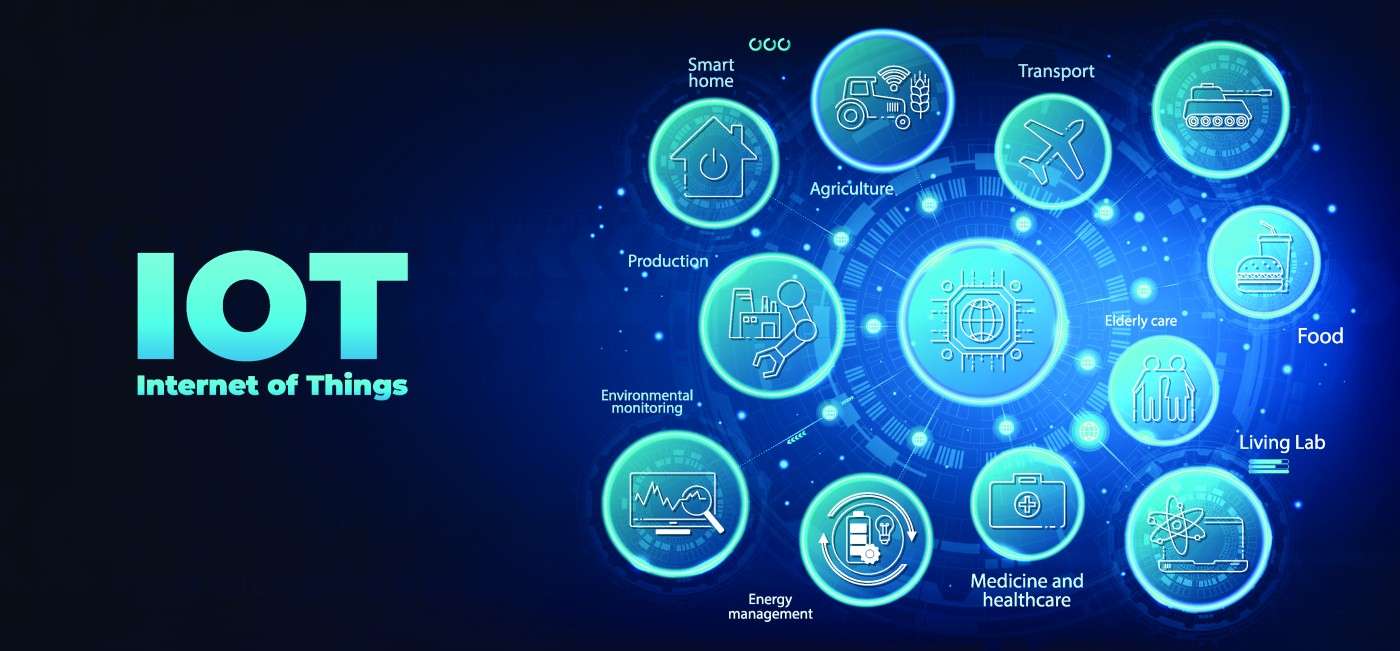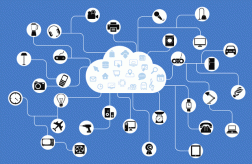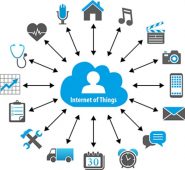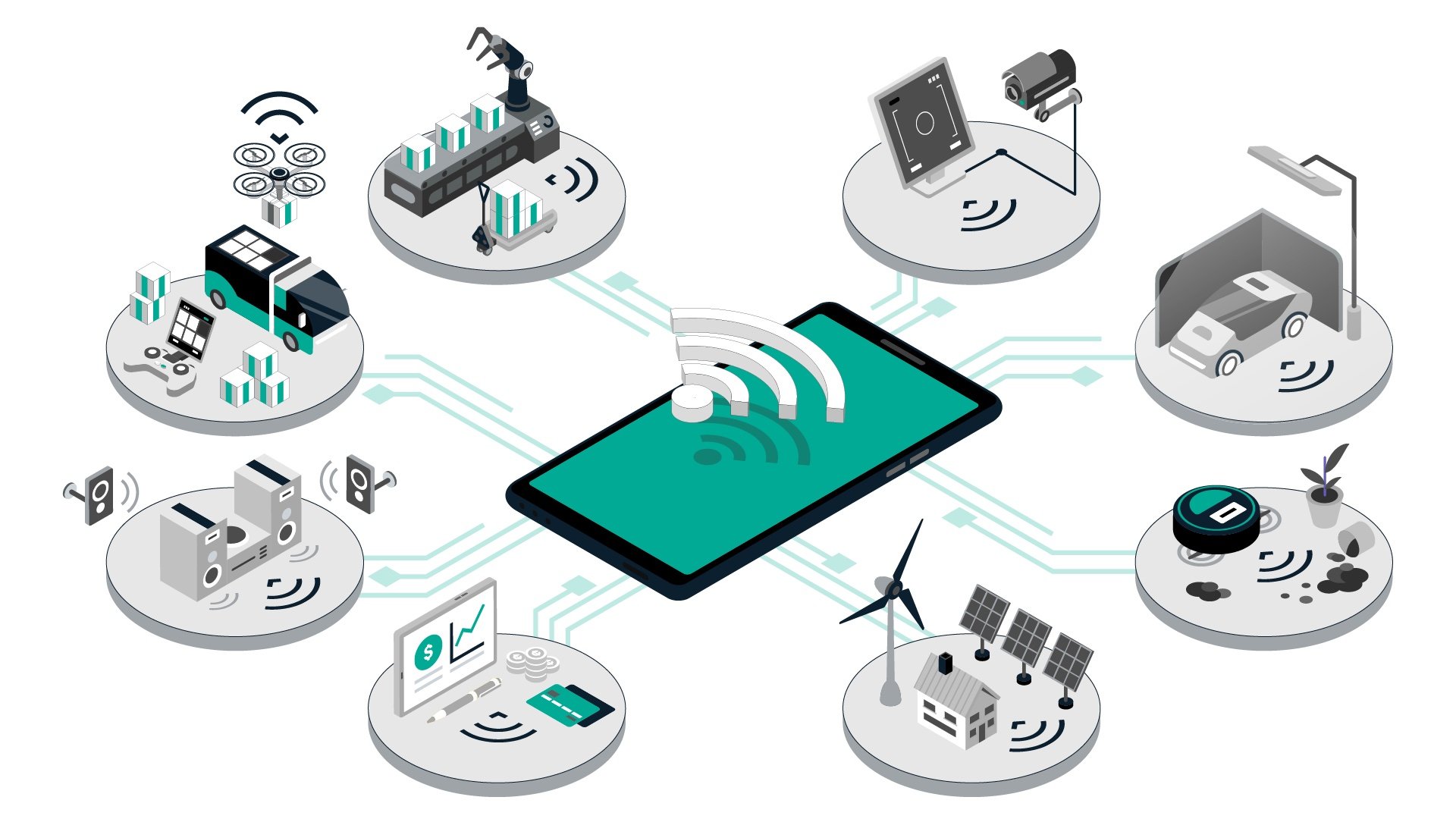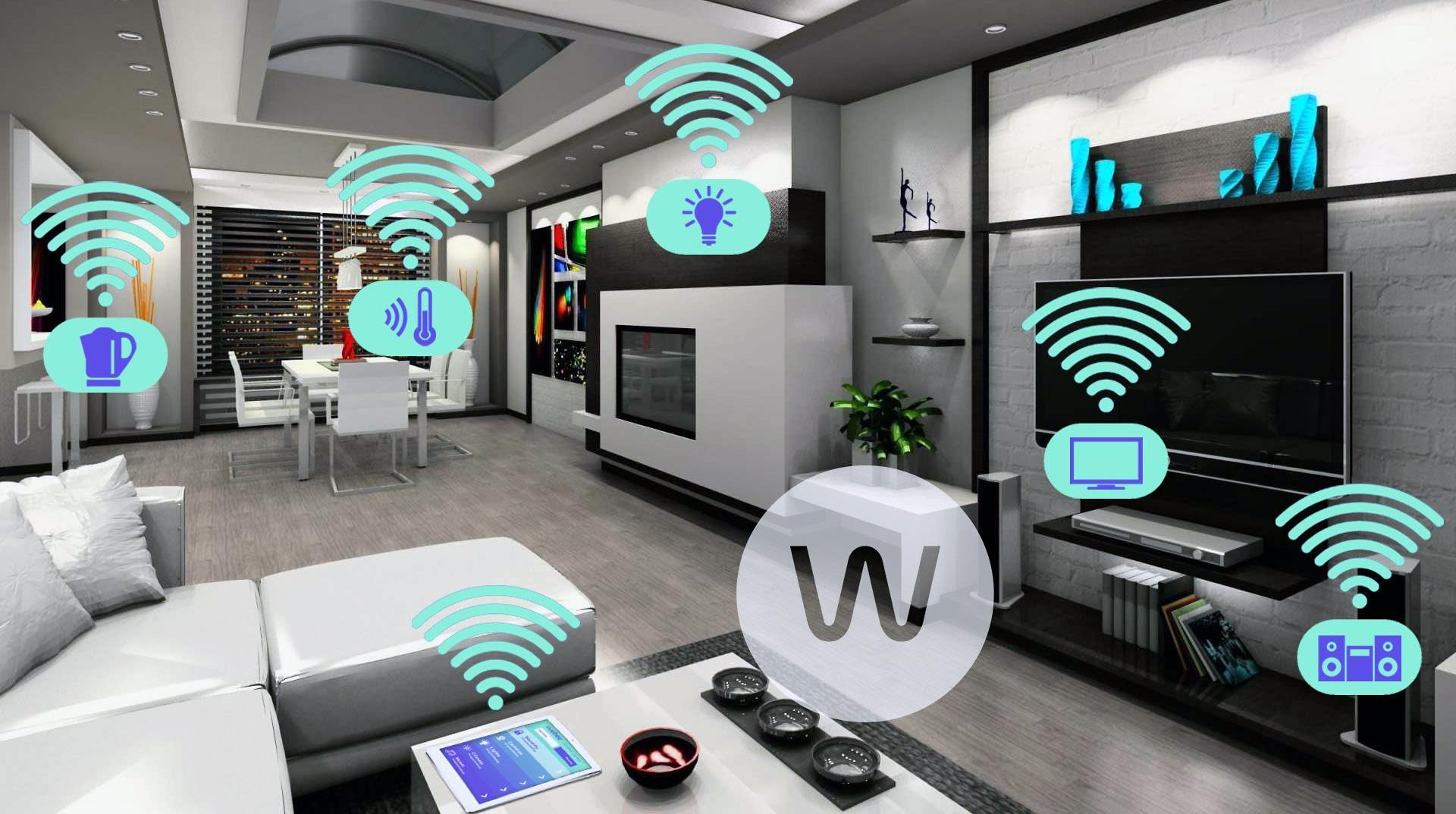Introduction
With the advancement of technology, the Internet of Things (IoT) has revolutionized the way we live. From connected appliances to smart homes, IoT devices have made our lives more convenient and efficient. When it comes to controlling the temperature in a home, there are various types of IoT devices that can help us achieve the perfect balance between comfort and energy efficiency.
In this article, we will explore some of the main types of IoT devices used to control the temperature in a home. These devices not only provide us with effortless control over our indoor climate but also offer energy-saving features, making them a valuable addition to any modern household.
Whether you’re looking to upgrade your thermostat, enhance your HVAC system, or automate your window blinds for an optimal temperature, you’ll find a range of IoT devices available to suit your needs. Let’s delve into the world of smart temperature control and discover the various options available for creating a comfortable and energy-efficient home environment.
Smart Thermostats
One of the most popular IoT devices for controlling temperature in a home is a smart thermostat. Smart thermostats offer advanced features and connectivity that allow users to remotely monitor and adjust their home’s temperature using a smartphone, tablet, or computer.
These devices come equipped with sensors and algorithms that learn the user’s temperature preferences and adjust accordingly, ensuring optimal comfort and energy efficiency. Additionally, smart thermostats often integrate with other smart home systems, such as voice assistants or home automation platforms, allowing for seamless control and integration with other smart devices.
Some smart thermostats also offer energy-saving features, such as learning algorithms that automatically adjust the temperature based on occupancy patterns or local weather conditions. This helps reduce energy consumption and lower utility bills, all while maintaining a comfortable indoor environment.
Installation of a smart thermostat is usually straightforward, and many models are compatible with existing HVAC systems. They can also provide energy usage reports and suggestions for energy-saving practices, empowering homeowners to make informed decisions about their energy consumption.
In summary, smart thermostats are a convenient and efficient way to control the temperature in a home. With their advanced features, connectivity, and energy-saving capabilities, they offer a significant upgrade from traditional thermostats.
Smart HVAC Systems
A smart HVAC (Heating, Ventilation, and Air Conditioning) system takes temperature control to the next level by providing comprehensive management of the entire home’s climate. These systems integrate with smart thermostats and offer enhanced control and automation features.
Smart HVAC systems typically include sensors throughout the home that monitor temperature, humidity, and air quality. This data is then used to optimize the operation of the heating and cooling systems, ensuring maximum comfort and energy efficiency.
One of the key advantages of smart HVAC systems is their ability to provide zoned heating and cooling. This means that different areas or rooms of the home can be set to different temperatures, allowing for personalized comfort and energy savings. For example, unused rooms can be kept at a slightly higher temperature, while occupied spaces maintain a comfortable temperature.
Furthermore, smart HVAC systems can be remotely controlled and monitored through smartphone apps or web portals. This means homeowners can adjust their home’s climate settings even when they are away. This feature is especially useful for those who travel frequently or want to manage their energy usage remotely.
Some advanced smart HVAC systems also have the capability to learn user preferences and adjust settings accordingly. For instance, if you typically lower the temperature before going to bed, the system can automatically anticipate this and start cooling the bedroom in advance.
In summary, smart HVAC systems offer a more comprehensive approach to temperature control in the home. With their sensor technology, zoning capabilities, and remote access features, they ensure personalized comfort and optimized energy efficiency.
Internet-connected Air Conditioners
Internet-connected air conditioners bring traditional cooling units into the realm of IoT, offering greater convenience and control. These smart devices allow users to remotely manage their air conditioning systems, making it easy to maintain a comfortable temperature at all times.
With an internet-connected air conditioner, users can adjust settings, monitor energy usage, and schedule cooling cycles using a smartphone app or web portal. This means you can turn on your air conditioner before you arrive home on a hot summer day, ensuring a cool and welcoming environment upon your arrival.
Many internet-connected air conditioners also integrate with voice assistants, allowing for hands-free control. Simply give voice commands to adjust the temperature, change modes, or turn the unit on or off.
Another major advantage of internet-connected air conditioners is their energy-saving features. Some models analyze occupancy patterns and adjust cooling levels accordingly, minimizing energy consumption when no one is present. Additionally, they can provide real-time energy usage data, helping users understand their air conditioning costs and enabling them to make more informed decisions about energy usage.
Installation of internet-connected air conditioners is similar to traditional units, and they are often compatible with existing ductwork and infrastructure. However, it is important to ensure a strong Wi-Fi connection in the area where the unit is installed to maintain reliable connectivity.
Overall, internet-connected air conditioners offer enhanced convenience, energy efficiency, and control. With their remote management capabilities, voice control integration, and energy-saving features, these smart devices provide a modern and efficient cooling solution for any home.
Smart Ceiling Fans
Smart ceiling fans are a modern and energy-efficient solution for controlling the temperature and airflow in a home. These innovative devices offer convenience, customization, and energy savings, making them a popular choice for many homeowners.
One of the main advantages of smart ceiling fans is their connectivity to smart home ecosystems. They can be controlled remotely using smartphone apps or voice commands through platforms like Amazon Alexa or Google Assistant. This means you can easily adjust fan speed, direction, and even set schedules from the comfort of your couch or anywhere else in the house.
Smart ceiling fans usually come equipped with built-in sensors that detect room temperature and humidity levels. This enables the fan to automatically adjust its speed and direction to maintain a comfortable environment. For example, on a hot summer day, the fan can spin faster and in a downward direction to create a cooling breeze, while on a chilly winter day, it can be set to run in reverse to circulate warm air and improve heating efficiency.
Furthermore, many smart ceiling fans feature energy-saving features such as timers and sleep modes. With timers, you can schedule the fan to turn on or off at specific times of the day, ensuring that you only use it when necessary. Sleep mode slows down the fan speed gradually over time to create a gentle breeze while you sleep, saving energy without compromising comfort.
Installation of smart ceiling fans is similar to traditional fans, and they can easily replace existing fixtures. However, it is crucial to ensure that your smart fan is compatible with your home’s wiring and has a stable Wi-Fi connection for seamless control.
In summary, smart ceiling fans offer convenience, customization, and energy savings. With their remote control capabilities, automatic adjustments based on room conditions, and energy-conscious features, these fans are an excellent addition to any smart home seeking efficient temperature management and improved airflow.
Connected Window Blinds or Shades
Connected window blinds or shades are a smart and efficient way to control the amount of natural light and heat that enters a home. These IoT devices offer convenience, energy savings, and enhanced privacy, revolutionizing the way we interact with our windows.
With connected window blinds or shades, you can easily adjust their position or angle using a smartphone app or voice commands. This allows you to control the amount of sunlight that enters the room and customize the level of privacy you desire at any given time.
Many connected window blinds or shades offer automated features that can be integrated with other smart home devices or routines. For example, you can schedule the blinds to open automatically in the morning to let natural light in or close during the hottest part of the day to reduce heat gain and improve energy efficiency.
Some advanced models even include sensors that measure ambient light or temperature, which can trigger the blinds to adjust automatically based on specific conditions. This ensures optimal comfort and energy efficiency throughout the day.
Connected window blinds or shades also enhance home security by allowing you to remotely control them while you’re away. This gives the impression that someone is home, deterring potential intruders.
Installation of connected window blinds or shades varies depending on the model and design. Some can be retrofitted onto existing blinds or shades, while others might require professional installation. It is essential to check the compatibility of the blinds with your windows and ensure a stable Wi-Fi connection for seamless control.
In summary, connected window blinds or shades bring convenience, energy efficiency, and enhanced security to your home. With their ability to adjust position and angle, automation features, and integration with smart home systems, these devices provide an intelligent solution for managing natural light, privacy, and temperature control.
Smart Insulation Systems
Smart insulation systems offer an innovative approach to regulating the temperature inside a home by ensuring optimal thermal insulation and energy efficiency. These systems monitor and adjust insulation levels based on specific conditions, providing a comfortable and energy-saving environment.
Traditional insulation materials such as fiberglass or foam provide a barrier against heat transfer and contribute to energy savings. Smart insulation systems take this concept a step further by adapting the insulation properties dynamically as needed.
These systems utilize sensors that measure temperature, humidity, and other environmental factors within the home. The collected data is then analyzed in real-time to determine the insulation requirements. Smart insulation systems can automatically adjust the insulation material properties, such as expanding or contracting, to maintain the desired temperature and energy efficiency.
Additionally, some smart insulation systems integrate with weather forecasting technology to anticipate and adapt to external temperature variations. This proactive approach ensures that the insulation properties are optimized to minimize heat transfer during extreme weather conditions.
Smart insulation systems can further enhance energy savings by integrating with other IoT devices, such as smart thermostats or HVAC systems. These devices can work in tandem to optimize heating and cooling patterns, ensuring that energy is used efficiently while maintaining a comfortable indoor environment.
Installation of smart insulation systems typically involves retrofitting existing insulation or incorporating specialized materials during construction. It is crucial to consult with professionals to determine the most suitable system for your home and ensure proper installation.
In summary, smart insulation systems are an innovative solution for maximizing thermal efficiency. By dynamically adjusting insulation properties based on environmental conditions and integrating with other smart devices, these systems can significantly improve energy savings while providing a comfortable home environment.
Conclusion
As technology continues to advance, the variety of IoT devices designed to control the temperature in our homes is expanding. From smart thermostats and HVAC systems to internet-connected air conditioners, smart ceiling fans, connected window blinds or shades, and smart insulation systems, there is a wide range of options available to suit different preferences and needs.
These IoT devices not only provide convenience but also offer energy-saving features, allowing us to create comfortable and efficient home environments. Smart thermostats learn our temperature preferences, while smart HVAC systems optimize heating, cooling, and zoning. Internet-connected air conditioners and smart ceiling fans provide remote control and energy-conscious features.
Connected window blinds or shades give us control over natural light and privacy, while smart insulation systems dynamically adjust insulation properties for optimal thermal insulation. All of these devices can be integrated seamlessly into smart home ecosystems, offering centralized control and customization through smartphone apps or voice commands.
When considering which IoT devices to choose for temperature control in your home, it’s important to evaluate your specific needs, budget, and compatibility with existing systems. Aim for a balance between functionality, energy efficiency, and ease of use. Additionally, consult professionals for proper installation and setup, ensuring optimal performance and reliability.
With the right combination of IoT devices, you can create a comfortable and energy-efficient home where temperature control is effortless and personalized. Embrace the possibilities offered by IoT technology and transform the way you experience comfort in your living space.







